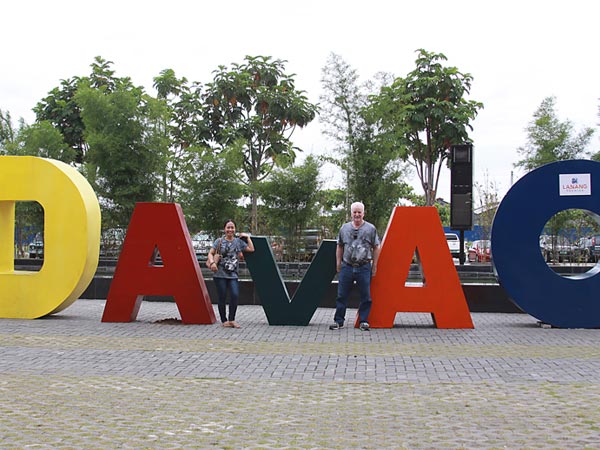Why Take Advantage of Your Davao Travel Guide

Travelling is a relatively rare privilege. A lot of people can’t afford the cost of transportation and lodging associated with travelling. Some people will have a list of places to visit but won’t have the means to start checking items off of that list. A lucky few do find themselves on planes to foreign locales. Fewer still are the ones that include Davao on their Philippine travel itinerary.
But a Davao trip is not just about getting to the city. It’s also about maximizing your time in it. There is a lot to do and only so many hours in a day to do them in.
It is important to take advantage of a Davao travel guide. While most people will probably have their hotels booked well before they get to the airport, some people will end up in a city with no plan and no accommodations arranged. Some travel guides will have a list of hotels in the area as well as attractions to visit.
A few travel guides will also have a list of bars, pubs, nightclubs, and restaurants in the area for anyone looking to meet with Davao women.
Some will have a map of the city, which comes in handy when a person finds themselves lost. It is true that most people carry a smartphone that comes enabled with some kind of mapping app, but coverage can be tricky in some areas, and a paper map can serve as a great backup just in case.
Getting everything done is not always as simple as picking up a Davao travel brochure and starting from there. Yes, it can be done. But it is not always the most efficient way to use the time that is available.
Explore Davao’s Top Wonders
A great way to be efficient with time is to take a Davao City tour. By taking a tour, a traveller can hit up all of the city’s highlights in a relatively short amount of time, sometimes in as little as a day.
But hopping on and off a bus is not exactly convenient. Not everyone is comfortable around strangers. But that’s fine, because a person can arrange for a Davao taxi tour instead. The concept is similar, but the vehicle is a taxicab instead of a bus. It’s more private and some of those who will visit Davao may find it a bit more comfortable.
But Davao is not just the city. In fact, 28 miles outside the city is Mt. Apo, a volcano which may or may not be active. It’s far enough outside the city that the usual noise that come with an urban space is a mere memory, making it a perfect place to for any would-be hikers or just nature-lovers in general.
It’s not just about a volcano. The region is home to the country’s national bird, Philippine eagle, the largest living eagle species in terms of wingspan. While the eagle is critically endangered in the wild, the Philippine Eagle Center in Mt. Apo’s foothills is a conservation area open to the public for a small fee. Anyone who wants to see a Philippine eagle is going to have a better chance of going there than stumbling onto one in the wild.
Killing time in the city proper is not that hard. The People’s Park boasts some serious biodiversity with over a thousand different species of plants over almost ten acres of land.
An animal lover can visit Davao Crocodile Park, which—as the name would suggest—boasts crocodiles. Despite the name, that is not the only attraction the park has to offer. It also has tigers, monkeys, and snakes. But it is a crocodile sanctuary and currently has Pangil, the second largest crocodile ever recorded in the Philippines.
There is more to visiting Davao than animal sanctuaries and natural wonders. There is more than one attraction fashioned by human hands.
Davao has a rich Japanese cultural heritage—first through foreign investments during the early twentieth century and later through being occupied by Japanese forces during the Second World War.
One of the most well-known attractions in Davao is the Japanese tunnel, which was used by the Imperial Japanese Army as a hideout during the war. It is one of many that the IJA used throughout the city. Tours are available and statues of IJA personnel have been erected all throughout to recreate how it would have looked during the war.
Like most major cities, Davao has its fair share of cultural institutions. One such institution is the D’ Bone Collector museum, which boasts an expansive collection of animal bones and complete skeletons.
There’s also the Museo Dabawenyo, which is focused on the region’s rich history and culture going back to before the country was colonized by the Spaniards. It’s also free, so a traveller looking to give their wallet a breather would do well to check it out.
There is also the Davao Museum, which contains artifacts not just from Davao but from the Philippines as a whole. The museum helps to protect the varied and rich cultural heritage of the country as a whole.
Travellers looking for more of an adrenaline rush can check out Eden Nature Park, which features sky-cycling. The activity is exactly as it sounds like: a person rides a bicycle in the air. The bike is suspended by wires and there are helmets and harnesses to keep the guests safe.
Davao has a rich history and is the largest city in the country in terms of total land area. As such, there is no shortage of activities for travellers of all budget visiting Davao. Those who want to have fun when they visit Davao will find themselves spoiled for choice.



